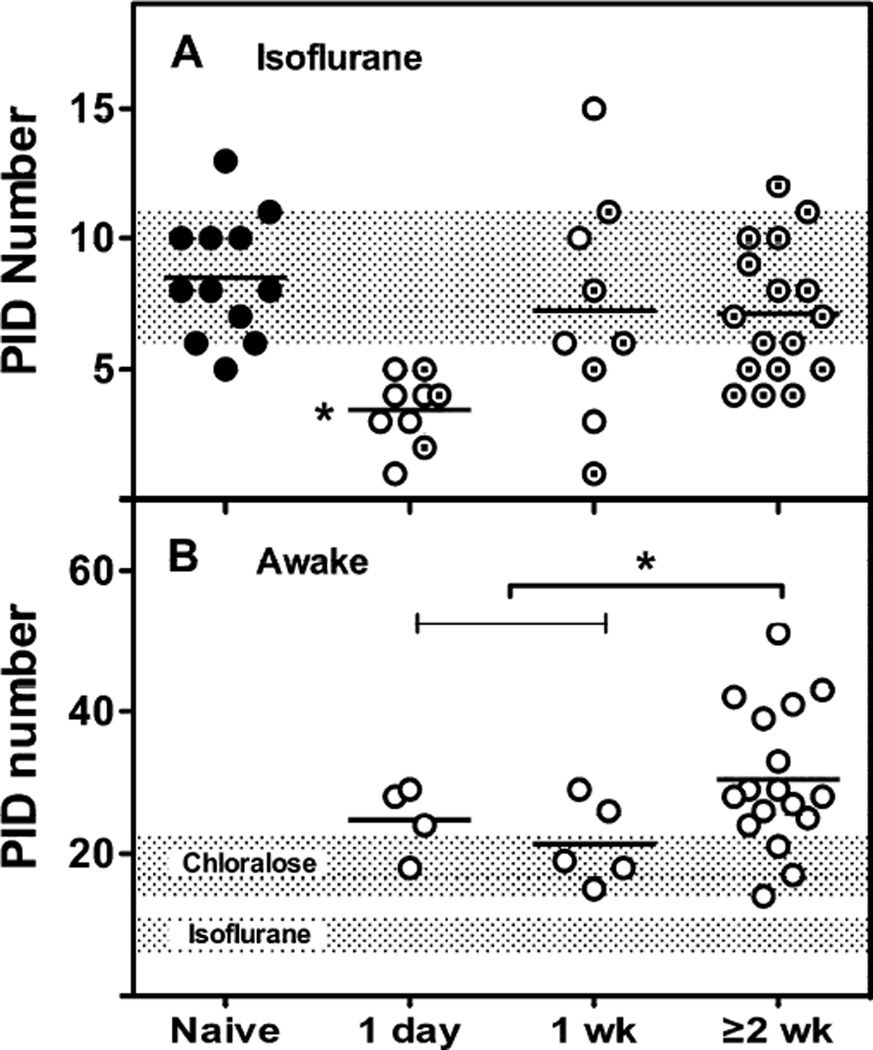Fig. 3.
Prior isoflurane anesthesia and preconditioning effects. A) PIDs under anesthesia. Propagated hyperemic CBF transients monitored by perfusion imaging during 4 hours under isoflurane anesthesia were markedly attenuated when MCA occlusion occurred 1 day after a previous anesthesia exposure, and this effect persisted in some animals at 1 week. Open circles, anesthesia accompanied by sham surgery; circled dots, anesthesia only; shaded bar, mean ± SD for the Naïve group. * P ≤ 0.05 vs. Naïve and ≥ 2week groups. B) PIDs in awake animals. PIDs were recorded from electrode arrays placed at the indicated intervals prior to MCA occlusion, with subsequent monitoring for up to 3 days. PID incidence was reduced at 1 day and 1 week relative to longer recovery intervals after electrode placement. Shaded bars, mean ± SD for historical results obtained from naïve animals under anesthesia with α-chloralose (Zhao and Nowak, 2015), or isoflurane (from panel A). * P ≤ 0.05 for pooled 1 day and 1 week groups vs. ≥ 2 week group.

